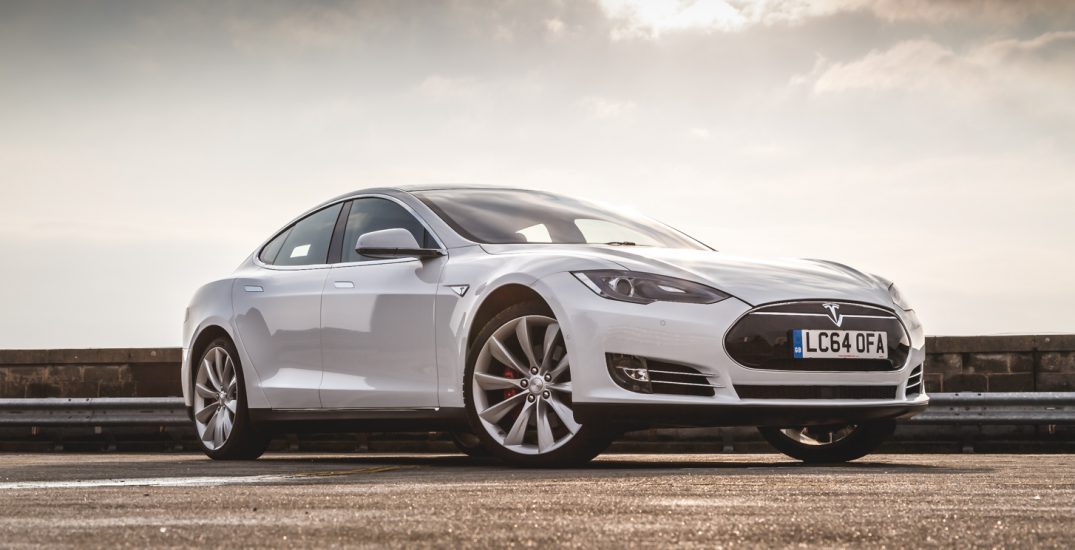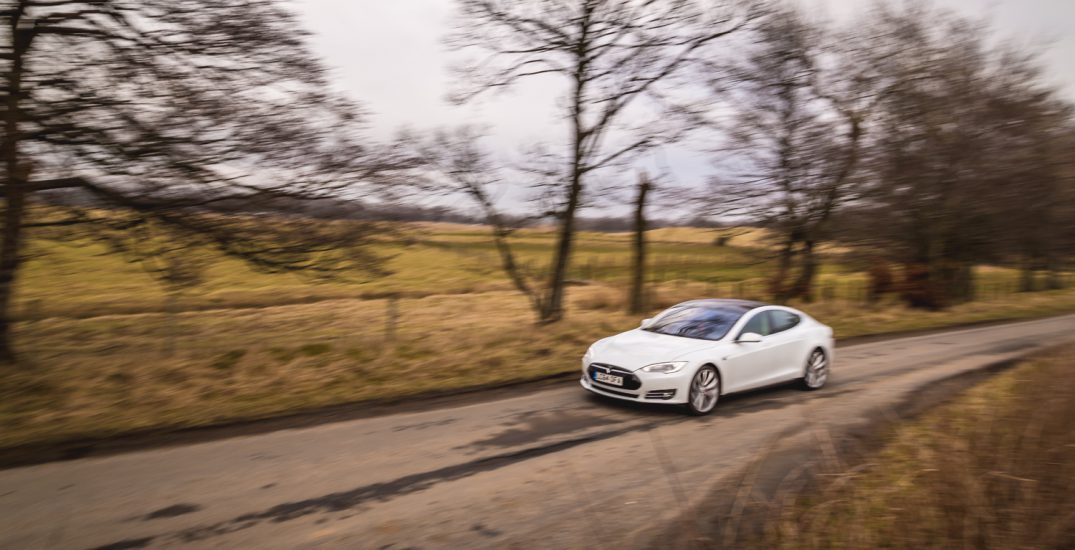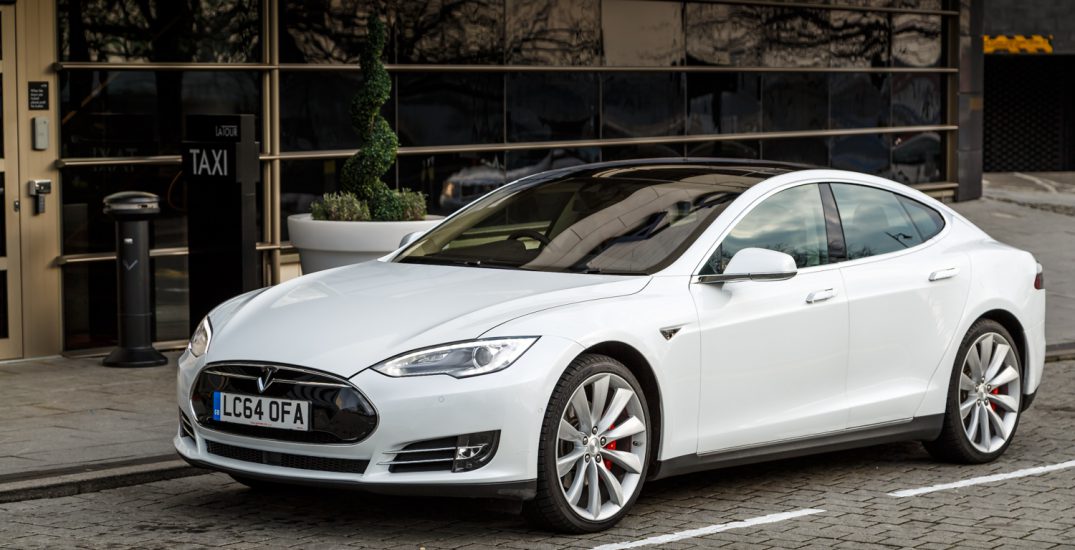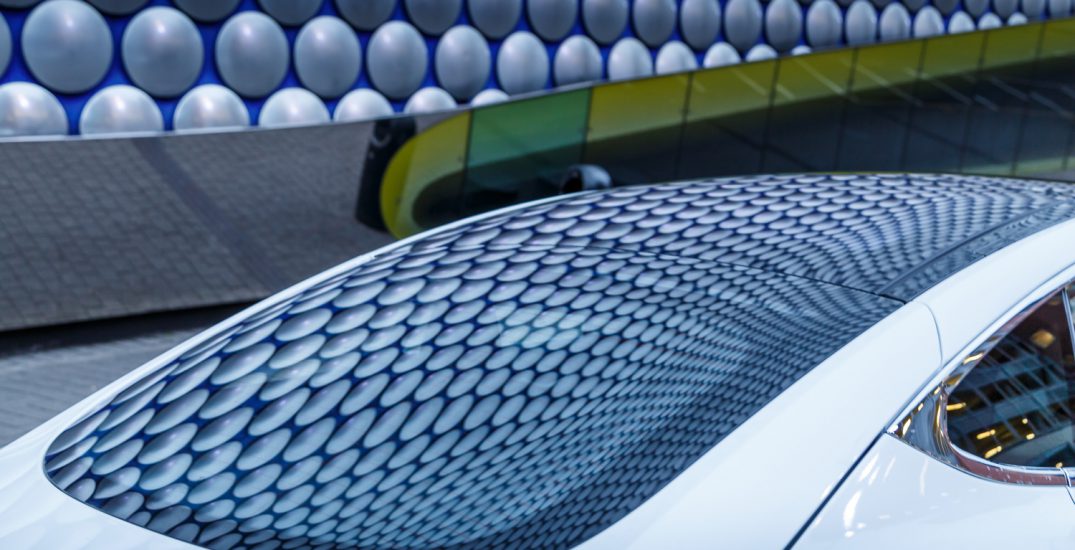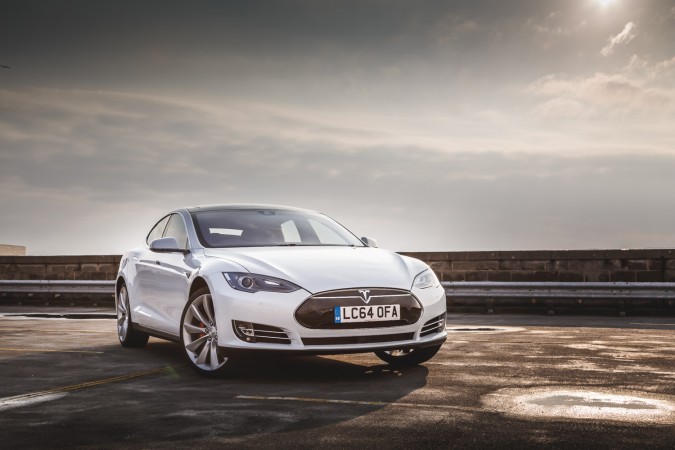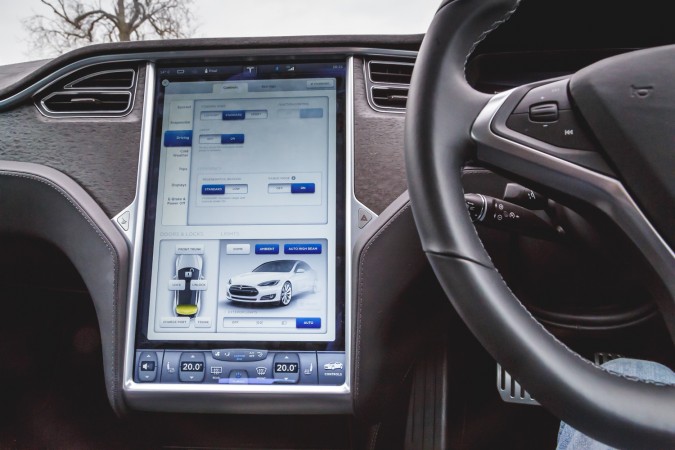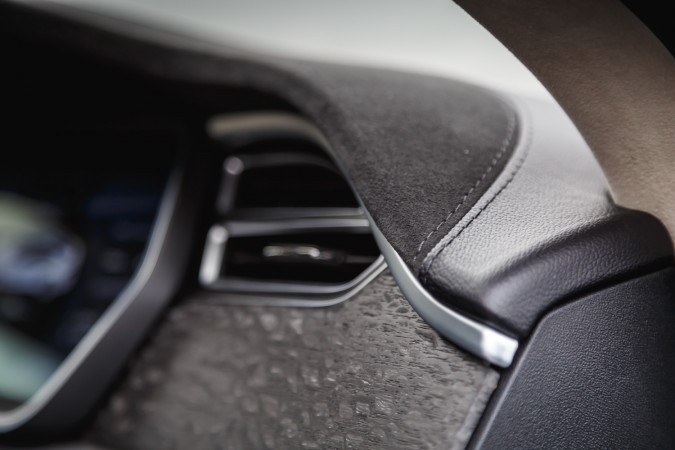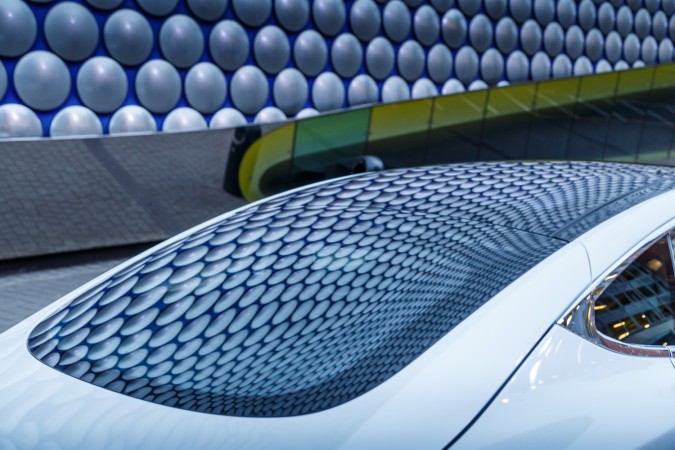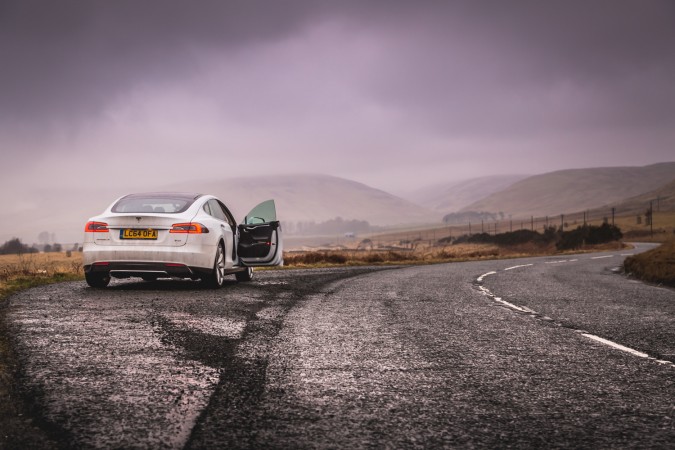Driven: Tesla Model S P85 Review
After a week of test-driving the best electric car on the market, here is what we think about this innovative car.
What is the Tesla Model S P85 all about?
The Tesla Model S P85 is a fully electric, five-door saloon car built in California, USA. Tesla are leaders in the electric car market and so the Model S is really changing the perceptions and purchasing decisions in the motoring industry. The model that we had on test was the Model S P85, which is no longer available due to being superseded. The Model S currently comes in four variants in the UK, the 70kWh battery AWD, the 85kWh battery RWD, the 85kWh battery AWD, or the 85kWh with dual performance motors – the P85D.
The P85 on test has a single electric motor at the rear of the car that creates 410bhp, will get the car from 0-60mph in 4.2 seconds and will do a top speed of 130mph. It also creates zero CO2 emissions, but can achieve up to a 250 mile range from a single full charge.
Teslas are significantly more powerful than all other electric cars on the market, which means that they require significantly more power to charge. Tesla has built an infrastructure of superchargers that can fully charge a Model S from flat in around one hour. These superchargers are only available in certain locations around the UK at the moment, but Tesla have plans to roll out more over the next few years.
How does it drive?
The Tesla Model S P85 drives like nothing I’ve experienced before, and there are certainly lots of advantages to having electric power over an internal combustion engine. The first thing that you are likely to notice is the instant amount of torque available, and to emphasize the point further, this is something that a combustion engine will never be able to do, the power is simply always instantly available in the Tesla, there is no wind-up, no lag, no waiting for the correct power band. You literally put your foot down and it’s delivered to the rear wheels.
The second major advantage is not having to manage any gears…at all. This results in a boosted 0-60mph time due to the elimination of any loss in acceleration as the gears are changed. Also, the useable power band whilst cornering helps stabilise the car; whilst cornering in the Models S you can continue up or down the rev range without the car having to change gears, which keeps the car balanced and with maximum grip, and once you straighten out again you can instantly hit full throttle and you’re gone. The electric motor definitely has the advantage here over a combustion engine, which could require a gear change mid corner, misbalancing the car. It’s small I know, but it actually has a huge impact to how it feels on the road.
The handling of the Model S P85 is incredible for a car of its size and class. The batteries line the base of the car between the front and rear wheels making the Tesla very well balanced. The handling is also improved with some very clever electronics. The P85 doesn’t use a limited slip differential found in most performance cars, instead it uses electronics to achieve traction whilst deploying its 410bhp. The car uses an open differential at the rear that electrically emulates a limited slip differential, using the brakes to control wheel spin and manage maximum traction. This setup works brilliantly, wet or dry, and the open differential perfectly controls the traction achieving maximum boost every time. Even using this innovative approach the feedback you get via the chassis gives you lots of communication on what is going on at the rear end. Brilliant job here Tesla.
Another major difference with driving an electric car is the introduction of regenerative braking. This is the process of recharging the batteries whilst driving. Instead of using brakes to slow the car, the Model S can convert the kinetic energy into electric using an inverter. The major benefit of this is that it is able to extend the range of the car by capturing what would otherwise be wasted energy. The regenerative brakes automatically start working as soon as you come off the accelerator, this means that you have to adjust how you drive the car slightly to get the most out of the batteries, but it will only take a few miles for you to fully adjust to it. With regards to the conventional brakes, I do feel that the pedal feel could be improved to give the driver a better idea of exactly what is going on under heavy braking, but having said this the stopping distance and brake performance is exceptionally good, despite the poor feel.
Charging
A key point to owning a Tesla is the charging, obviously, and I’ve learnt a lot about charging from my time with the Tesla. To summarise, if you have a local Supercharger you have nothing to worry about at all, but if you don’t you have to do a bit more planning around how and when you would charge the car.

The Superchargers can fully charge the Model S in around one hour, you can expect to get around 250 miles range from a full charge, and they charge around 400v and up to around 300 amps. They are incredible and really help make the car a suitable replacement for a combustion engine. You could argue that there is not currently enough Superchargers in the UK to allow long journeys, but there are plans to build many more in the UK over the next few years.
There are other ways that you can charge the car though, you can get home charging stations that are more than capable of charging the car overnight. There are also a range of electrical charge points that are accessible to the public; some of the higher power ones charge the car at around 60 miles per hour of charge time. If needed you can also charge the car from a three pin plug in your house, but you can only expect to get around six miles per hour from charging the car this way, and is not recommended as a suitable solution to charge.
What is it like inside?
Tesla ripped up the rule book for car interiors when they designed the interior of the Model S. For a company that has been producing cars for as little time as Tesla, the design, implementation and quality is impeccable. I mean we’re talking Mercedes quality interior from a company that has been making cars for less than 10 years.
When you get into the car the first thing you realise is that there is absolutely nothing where you’d expect the gearbox and handbrake equipment to be, which quickly reminds you that you are in a very different type of car. Tesla has virtualised all the switch equipment inside the car as much as possible, so the centre console only has two buttons, one for the hazard lights and one to open the glove box. Having everything computerised means that Tesla are able to add new functionality to the car at any time simply from software updates. This is incredible; name me another car that gets more functionality as it gets older?
All of the controls are operated via a 17-inch high definition touchscreen; the interior is a gadget lovers dream. The 17 inch tablet style screen gives you access to lots of incredible features including full screen satellite navigation that uses Google’s imaging technology, a HD reversing camera, and full size web browser that has its own 3G connection built into the car. This is the most connected car in the world, and even has integration with both iPhone and Android apps to manage charging systems, temperature controls, door locks, remote start, GPS tracking, and it will even give you directions back to the car in case you can’t find it. Wow!
The materials used in the car are of an exceptionally high quality and have some unique features that have never been introduced into cars before, such as the use of virtual buttons, smart phone connectivity and in car web browsing. I believe Tesla have been able to create such a brilliant interior because they had the ability to start from scratch, right from the ground up, but also they wanted to take an innovative approach to challenge the traditional car interior. As far as I am concerned they certainly succeeded.
The Experience
From pictures, I anticipated the Tesla Model S to be a standard looking executive car, how wrong could I have been? The Model S is a very rare car in the UK at the moment, and the looks of the car are not as understated as I thought they would be. The Model S attracts a lot of attention, people were interested to see a super modern innovative car on the road and it was helped by the fact that it is also a really good-looking car.
Summarising the Model S P85 experience is a tricky one, it’s simply just ahead of its time. The driving experience is insane; the handling capabilities, power delivery and refinement are all unprecedented. The P85 goes like the speed of light and doesn’t make a sound. It just blows your mind.
The car is very relaxing, comfortable and quiet, but at the same time it can also be thrilling, exciting and unlike anything else you have ever experienced before. How is that possible?
Verdict
The Tesla Model S P85 is our first glimpse into cars of the future, and the P85 proves that electric cars aren’t boring whatsoever. The Model S oozes subtlety and has relentless performance that is equally matched by ultra-refined super smooth driving. The Tesla Model S really doesn’t feel like a conventional car anymore, Tesla have taken the motorcar to the next level where a lot of the boundaries have been taken away and room for innovation has been created. In short, the Model S P85 is one of the best cars I have ever driven.
Video Highlights
Specification
Tesla Model S P85
- Price: £ 85,130
- Engine: Three-phase electric motor
- Power: 410bhp
- Torque: 600Nm
- Transmission: Single Speed RWD
- 0-62mph: 4.2 Seconds
- Top speed: 130mph
- Weight: 2,100kg
- Range: 250 Miles Typical / 310 Miles Max
- CO2: 0g/km
Author: Paul Hadley

